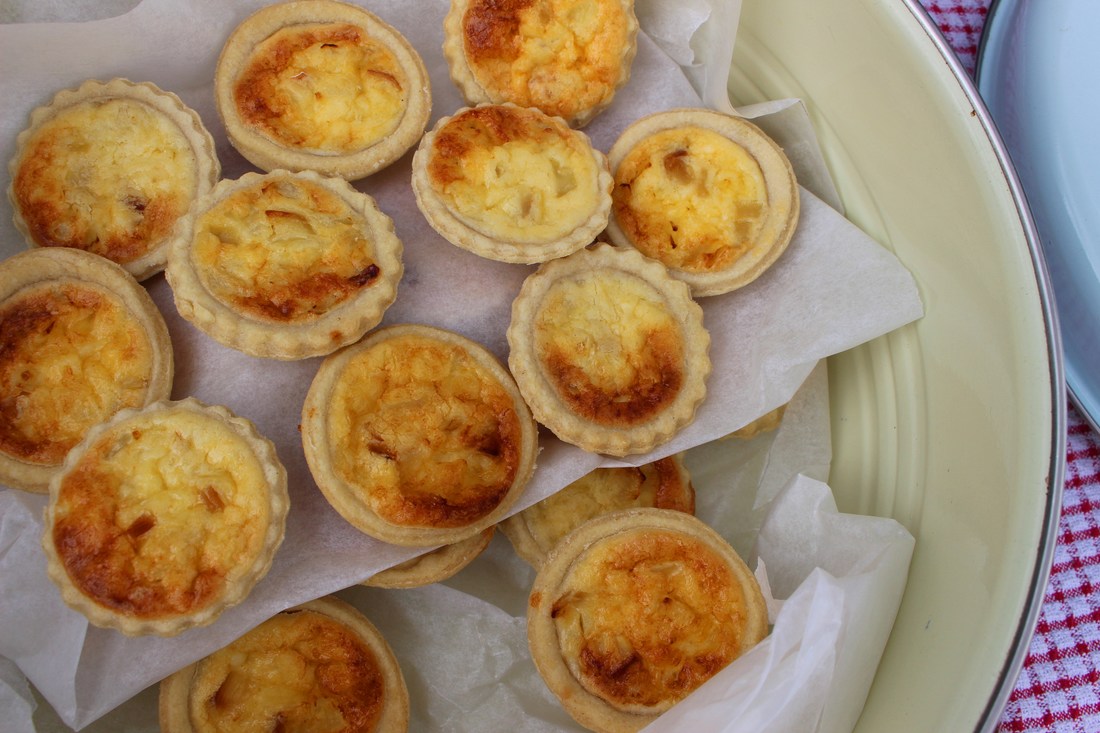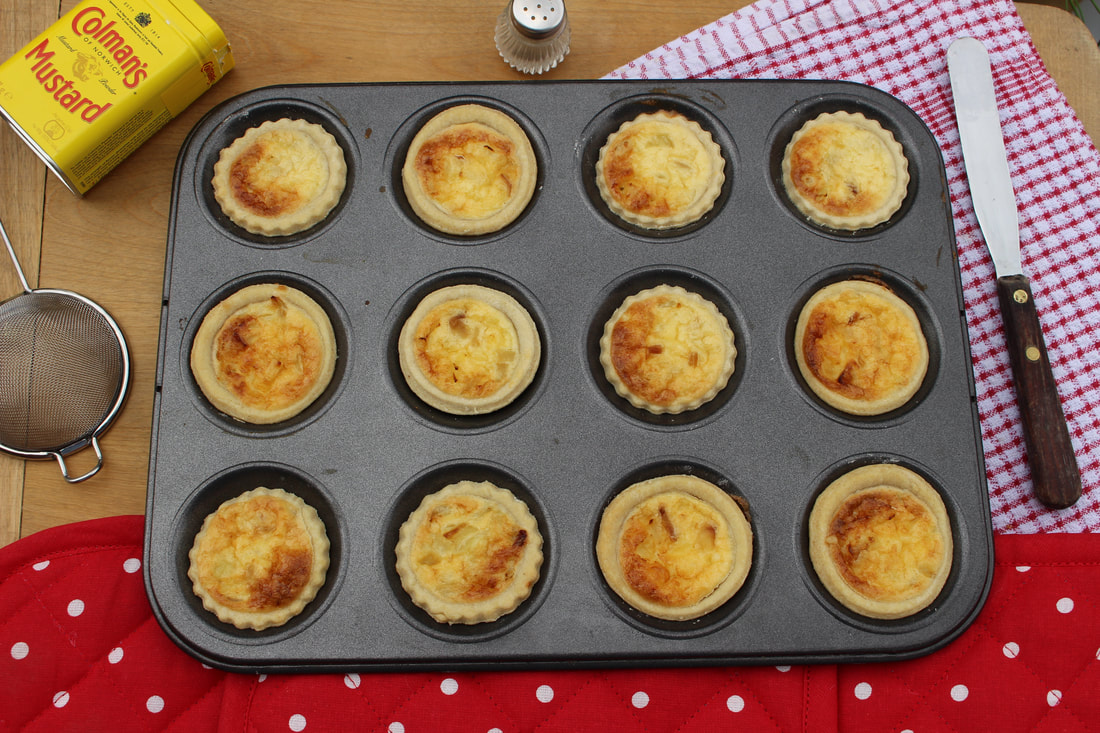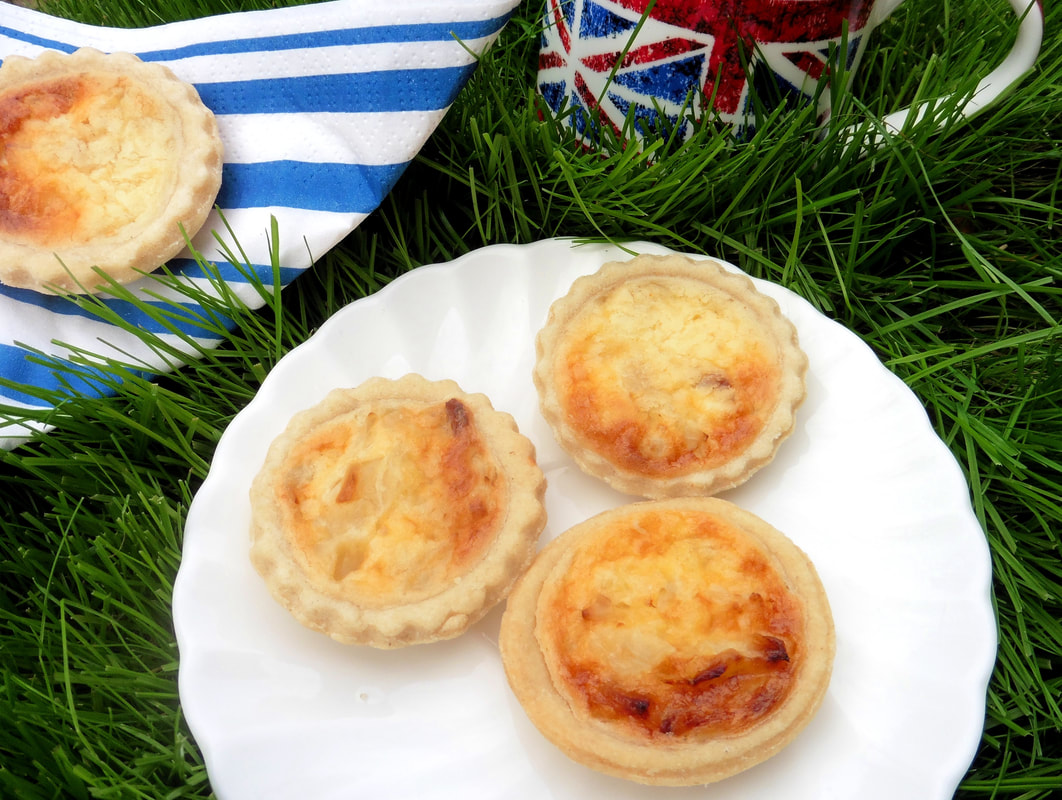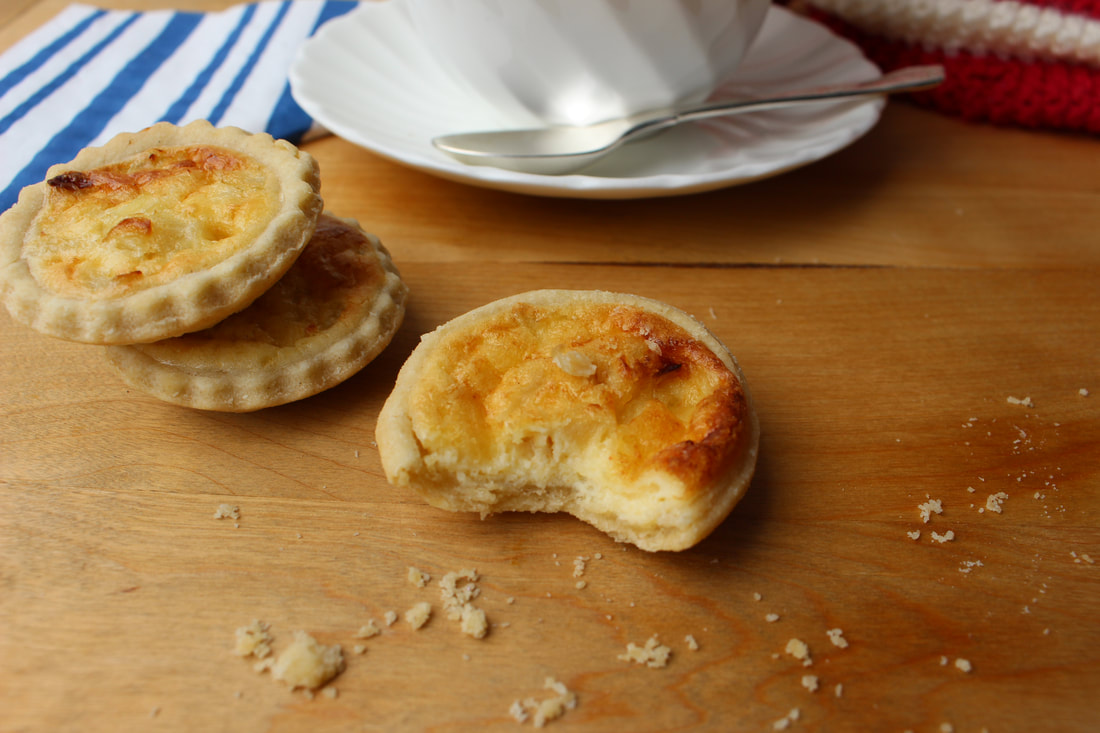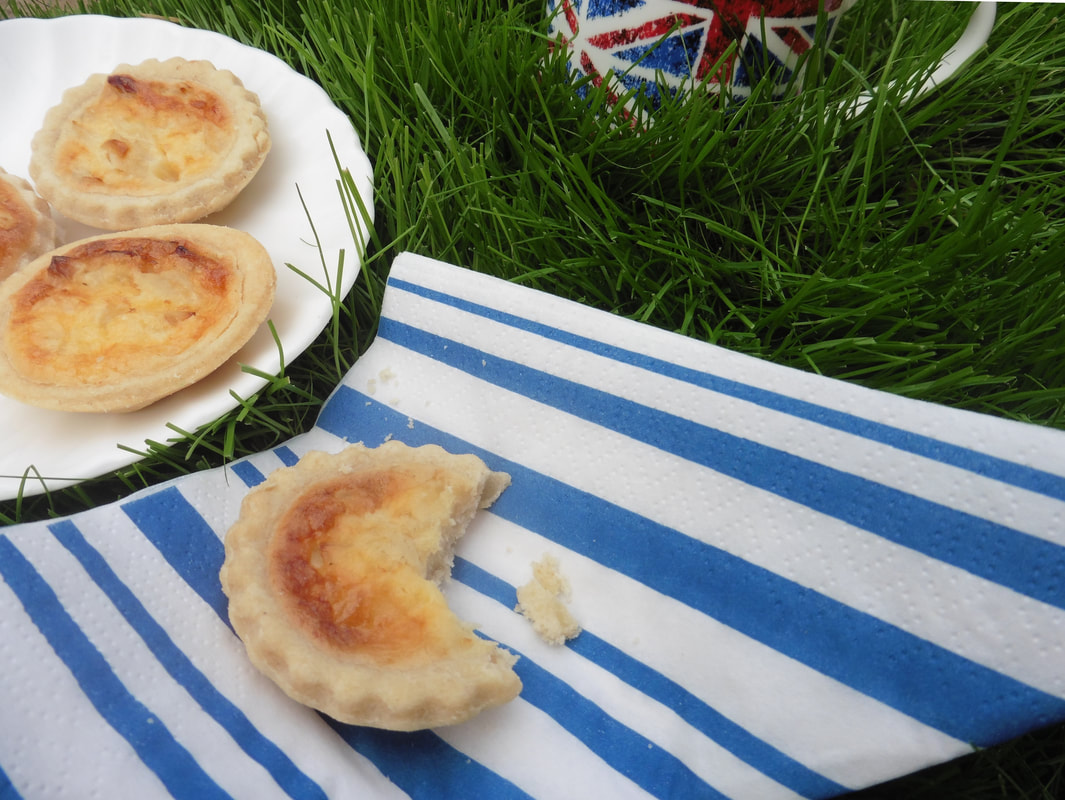|
Mini quiches are always a great savoury favourite for parties and picnics and a must for garden parties. Add some cooked diced bacon or lardons if you prefer but the simple cheese and onion flavour is delicious and also suitable for non-meat eaters. Easy to make and assemble: particularly if you whiz up your pastry in the food processor and make an all in one filling rather than faffing about adding cheese and onions and what have you separately, plus, unlike full size quiches, you don’t have to bake the pastry cases blind first either. Quiche Query 1 Just to clear up a couple quick quiche queries before we start: as Miss Windsor and I were discussing on the phone the other day, the lovely savoury cheesy tarts we all make and love and nonchalantly refer to as ‘quiche’ aren’t technically quiche at all. Classic Quiche Lorraine, from the Lorraine region of France, was originally a pastry case filled with a delicate, beautifully wobbly filling of lightly seasoned cream, eggs and bacon. The more familiar version with cheese; should really be called a savoury flan or tart, but times change and the name quiche seems to have stuck, and why not? In fact, if we delve deeper into history, it seems quiche wasn’t originally French at all but German. Stretching back to the Middle Ages, when Lorraine was part of Germany and known as Lothringen, it was a savoury kuchen or cake, and, instead of pastry, the crust was very likely bread, rather like a pizza base. You live and learn, as Miss Windsor and I always say. Quiche Query 2 Plain or Fluted Cutters? Should you use a plain or a fluted cutter for your mini quiches? Strictly speaking, plain cutters are intended for savoury tarts, fluted for sweet. If this sounds a bit regimented, it is actually a handy convention as it helps distinguish savoury from sweet fillings instantly. On the other hand, if you feel inclined, why not break with convention occasionally? Fluted edges do look so pretty and appealing after all! Make Pastry in a Food Processor You can make beautiful buttery melt in the mouth pastry quickly and easily in a food processor. It’s simplicity itself: but do follow the measurements and method exactly. Top Tip 1 Stop processing the very second the pastry begins to clump together: otherwise it will be tough and lose that lovely melt in the mouth, slightly flaky quality. Top Tip 2 As you cut out, leave as little spaces as possible between rounds to minimise handling and re-rolling. Too much handling also makes pastry tough. Top Tip 3 Grate your cheese finely: use the fine side of a box grater. You’ll find it then melts silkily into the savoury custard giving a much smoother result. Top Tip 4 Stir mustard powder through a tea strainer with a teaspoon to prevent it clumping together. Top Tip 5 When transporting the little quiches, cool them first, line your container with greaseproof paper and for a double layer: lay a piece of slightly crumpled greaseproof paper over the first layer. Toodles! Mrs Simkins X Makes 24 Pastry
Filling
Equipment
Method
0 Comments
Your comment will be posted after it is approved.
Leave a Reply. |
Search for recipes
Archives
June 2020
Categories
All
|

